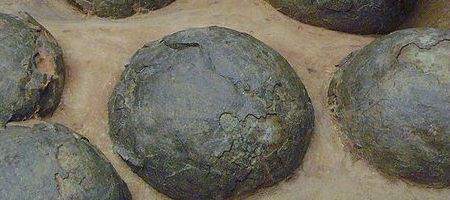It was egg-laying that did for the dinosaurs, claims a new report, while viviparous mammals thrived.

Researchers from the University of Zurich say laying eggs was such a disadvantage that it eventually led to the dinosaurs’ mass extinction.
The reason is the contraints that egg-laying puts on an infant animal’s size. Weighing in at four tons, a mother dinosaur was 2,500 times heavier than its newly hatched baby – while the smiilar-sized mother elephant is just 22 times bigger than a new-born calf.
The huge disparity in size between adults and infants also throws accepted ecological theories out of whack. Baby dinosaurs don’t occupy the same ecological niche as their parents, as in most present day species, but pass through a number of different ones as they grow.
“The consensus among researchers is that animals of particular body sizes occupy particular niches,” says Daryl Codron of the University of Zurich.
“In the case of the dinosaurs, this would mean that a single species occupied the majority of the ecological niches while mammals occupied these through numerous species of different sizes.”
According to the team, there were far fewer small and medium-sized species of dinosaur than was the case in mammals, as their niches were occupied by the young of larger species.
Computer simulations indicate that small dinosaurs were in competition both with one another and with small mammals – increasing pressure to such an extent that it brought them close to extinction, say the scientists.
Meanwhile, explorers from a university on Chechneya claim they’ve discovered the largest dinosaur eggs ever – some a meter across.
But Moscow paleontologist Valentina Nazarova told AFP this
was highly unlikely, as the eggs are far larger than any previously found.
She also queried their location, in the North Caucasus: “Dinosaurs didn’t lay eggs while jumping about like mountain goats,” she said.






